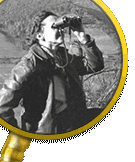Caption: Striking workers during the violent year of 1877 often targeted the key properties of companies against which they were striking for arson and sabotage. The Round House at Pittsburgh was a hub of railroad activity and one of the company's most expensive properties.
Courtesy of the Railroad Museum of Pennsylvania
Caption: Damaged Track, Railroad Riots, Pennsylvania Railroad, Pittsburgh, 1877.
Library of Congress
Caption: Police beating back the strikers in Philadelphia Railroad, July 23.
The Railroad Museum of Pennsylvania
Caption: Pittsburgh riots lower engine house.
Pennsylvania State Archives
Caption: Pittsburgh Riots panhandle tunnel.
The Pennsylvania State Archives
Caption: In July 1877, after refusing to negotiate with striking workers in Pittsburgh, the Pennsylvania Railroad brought in militia from Philadelphia to end the walkout. When the Philadelphia militia fired into a crowd killing 20, enraged Pittsburghers attacked the troops and burned the rail yards. By the time the rioting ended, some 40 people had died, and one hundred locomotives and 1,000 rail cars been destroyed.
Pennsylvania State Archives
Caption: The wildcat railroad strike of 1877 quickly spred across the nation. Shutting down and crippling dozens of railroads, this first national strike in American history also claimed hundreds of lives.
This photo shows the devastated ruins of the Pennsylvania Railroad's 28th Street roundhouse in Pittsburgh, soon after it was burned to the ground by strikers that July.
Courtesy of the Pennsylvania State Archives
Caption: Pittsburgh Riots Remains of the Paint Shop.
The Pennsylvania State Archives
Caption: Union Street Station Ruins.
Pennsylvania State Archives
Caption: Pittsburgh Riots, July 21-22, 1877. Looking East from 25th Street.
The Pennsylvania State Archives
Caption: Burning of the Machine Shops. Pittsburgh In The Hands Of The Mob.
Library of Congress
Caption: A funeral procession and a horse drawn hearse among the ruins.
The Library of Congress
Caption: The great Railroad Strike of 1877 began on July 16, when railroad workers for the Baltimore & Ohio Railroad In Martinsburg, West Virginia, staged a spontaneous strike after yet another wage cut. The strike quickly spread to Pittsburgh, which witnessed the greatest carnage.
Courtesy of the Railroad Museum of Pennsylvania
Caption: Ordered to Pittsburgh by Governor Hartranft, Philadelphia militia on July 21 fired into an angry crowd, killing twenty, including a woman and three children. Furious, thousands of Pittsburghers converged upon the PRR yards and burned the roundhouse to the ground. By the next morning, twenty-five more had died, including five soldiers.
Courtesy of the Railroad Museum of Pennsylvania
Caption: On the night of July 22, rioters burned down the Reading's Lebanon Valley Railroad bridge, which carried the Reading line across the Schuylkill River.
Library of Congress
Caption: Steeple-View Of The Pittsburgh Conflagration.
Library of Congress
Caption: Robert Ammon, the leader of the Pittsburgh and Fort Wayne Railroad Strike, at his post, directing the movements of the strikers.
Library of Congress





